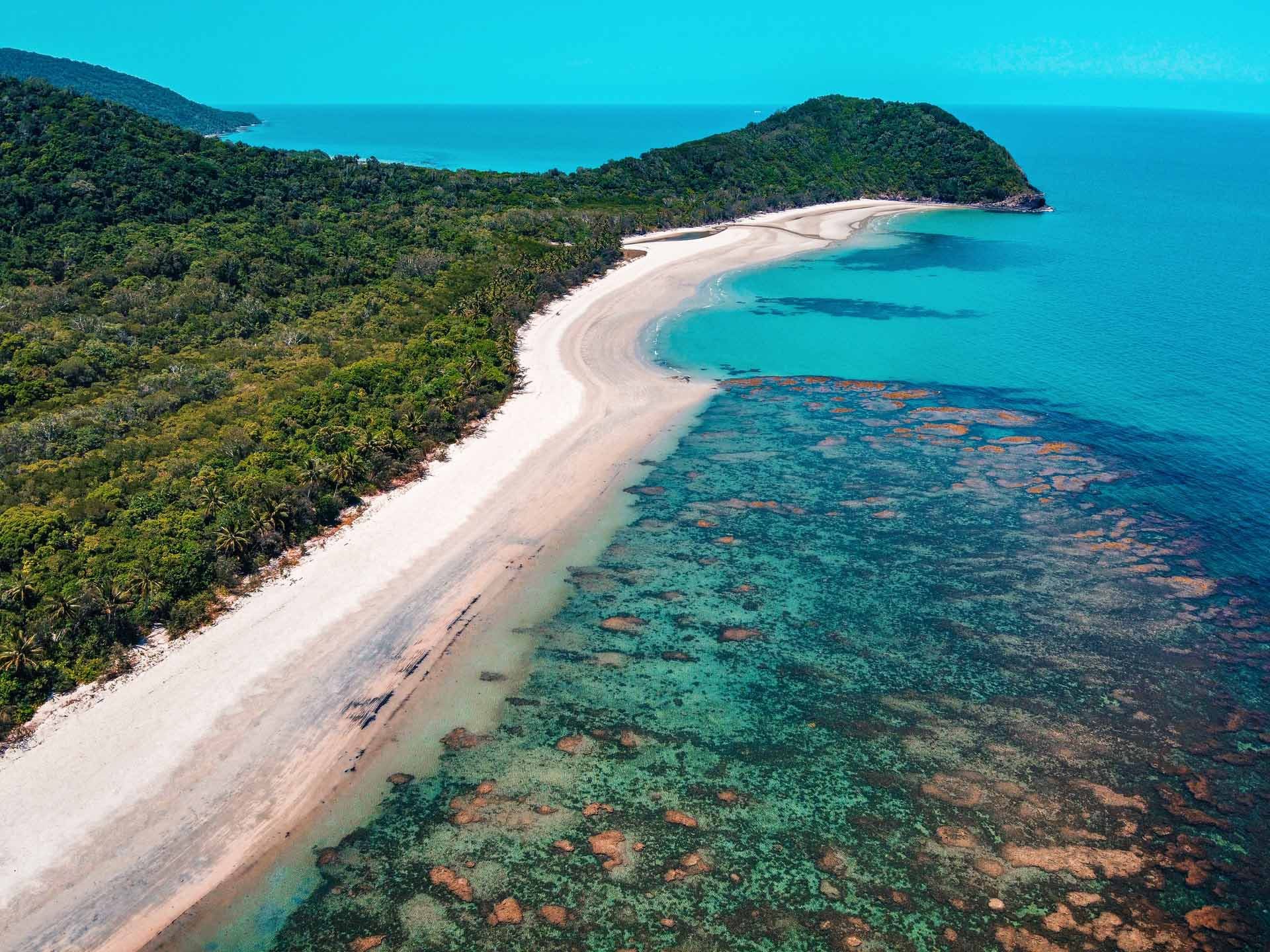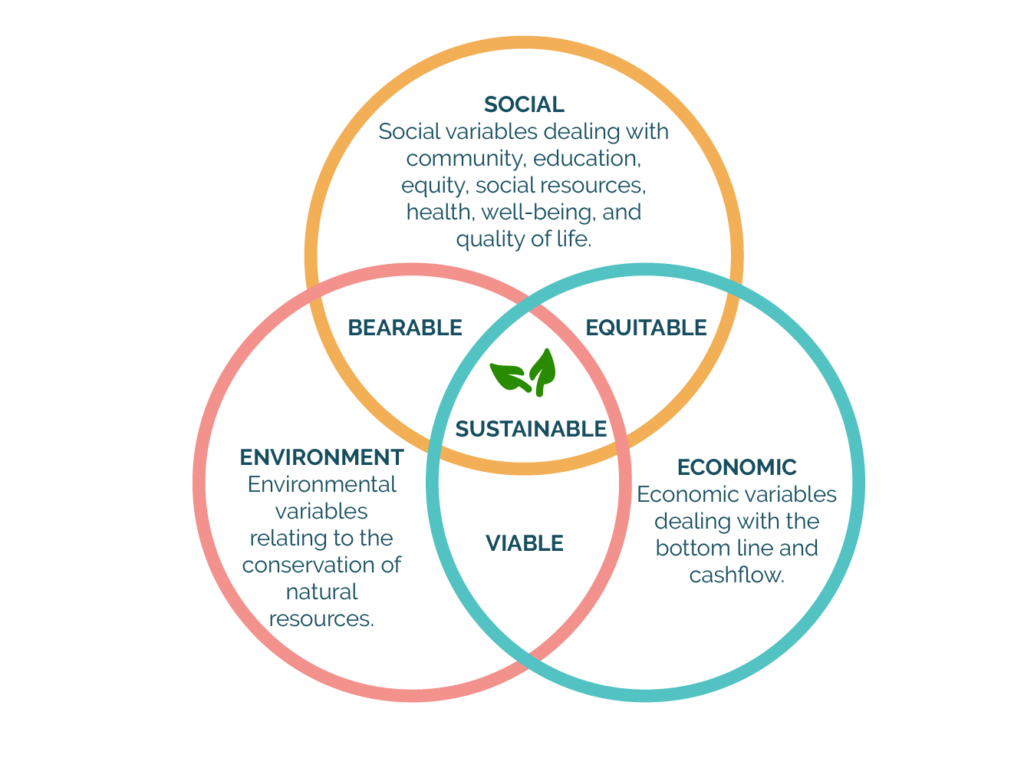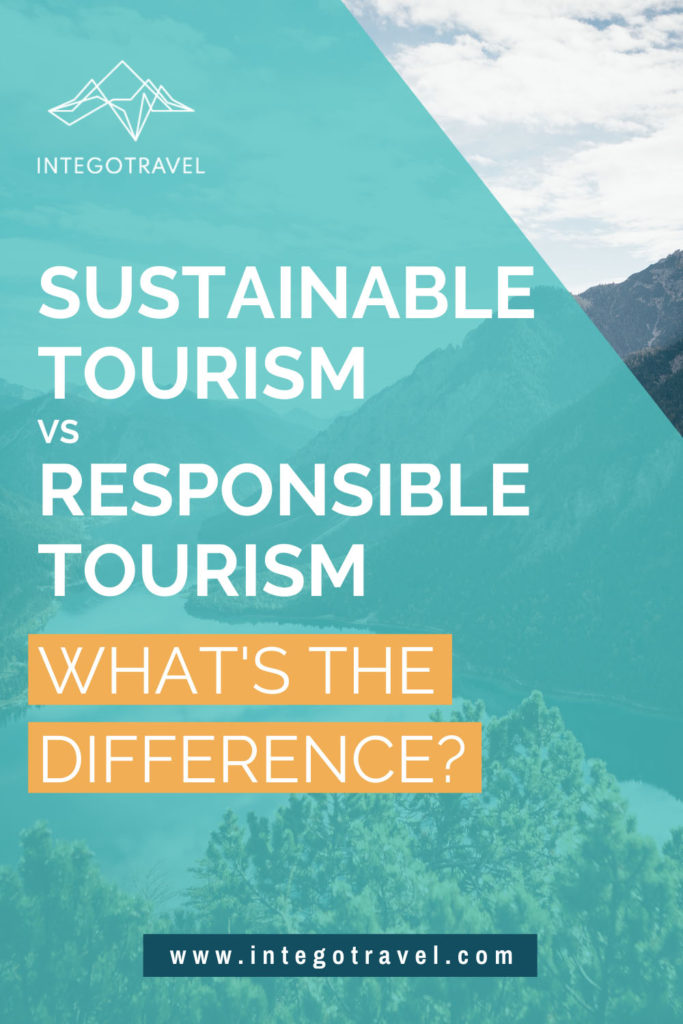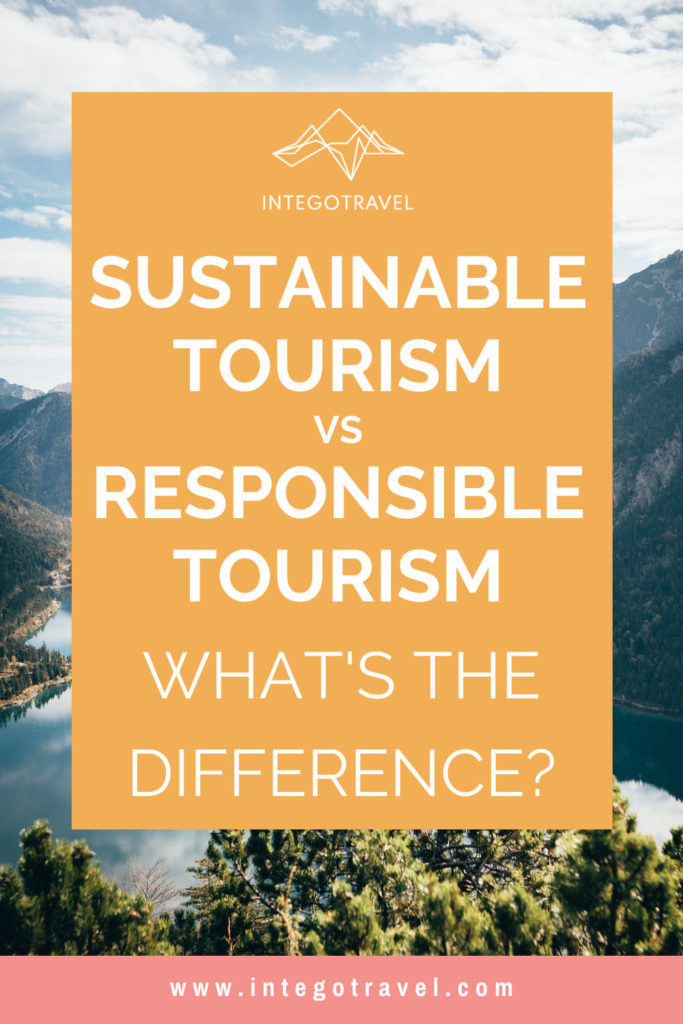Table of Contents
Introduction
It was only a few years ago that I wrote down this personal goal: ‘travel to every country in the world’. My heart still flutters at the possibility of achieving this dream.
Yet, absent from my desire when I set myself this goal was the recognition that travelling has a huge footprint on the environment, the destinations we visit, and the people who call them home.
A few years ago, I was ignorant of this fact.
Of course, I knew flying had one of the biggest carbon footprints in the world. Yet, somehow, I hadn’t quite internalised the issue. Although I am an environmentalist, my passion for travel had taken precedence over my values. Talk about cognitive dissonance!
noun. [U] a state in which there is a difference between your experiences or behaviour and your beliefs about what is true.
noun. [U] an uncomfortable feeling that comes from believing or thinking two different things that cannot both be right.
After educating myself more on the topic of sustainable and responsible tourism, my ideals have changed. I no longer wish to visit every country in the world. Or rather, I should say that even though I would like to, I now prioritise aligning my travels with my values.
I much prefer to travel with a purpose, adopting habits to minimise the negative impacts of my travels and maximise the positive ones. This is the premise of responsible and sustainable tourism. But, these two terms are somewhat different and I think it’s important to understand why.
Briefly speaking, the difference between sustainable tourism and responsible tourism is that sustainable tourism has to do with the sustainability of the tourism industry as a whole.
Responsible tourism, on the contrary, relates to specific actions and strategies that individuals, communities, businesses and tourism managers can take to minimise the impact of their tourism activities.
Let’s expand…
What is sustainable tourism?
To understand sustainable tourism, we first need to understand what ‘sustainable’ means.
Back in the 70s, the term ‘sustainable development’ was already talked about in different arenas. But, the term became mainstream only after the Brundtland Commission published the landmark report ‘Our Common Future’.
In the report, the authors defined sustainable development as:
“development that meets the needs of the present without compromising the ability of future generations to meet their own needs.”
Given this definition, we can refer to sustainable tourism as the application of the concept of sustainable development to tourism. Essentially, the aim of sustainable tourism is to:
- Minimise the negative impacts and maximise the positive impacts of tourism as an activity, while conserving resources or using them wisely in order to maintain their long-term viability.
- Consider social variables that deal with community, education, health, well-being and equity.
- Generate economic benefits.
Sustainable tourism can also be weak or strong. On one hand, the weak approach places anthropocentrism at its centre (i.e. humans). It prioritises ‘development’ to ensure the tourism offering caters to humans. If you’ve ever visited large resort hotels or theme parks, you will be familiar with the weak sustainable tourism approach.
Strong sustainable tourism, on the other hand, occurs in relatively undisturbed natural or cultural settings. Here, a slight increase in tourism activity can damage the environment or bring sociocultural harm.
As a result, we associate strong sustainable tourism with the ‘sustainable’ component of sustainable development. This approach either seeks alternative options such as small-scale ecotourism or prohibits all tourism activities from certain areas.
In practice, sustainable tourism helps connect the planning and management functions of tourism development with the social goals of tourism into a concrete set of guidelines that help pave the way to a more sustainable tourism industry.
What are some examples of sustainable tourism?
There are several components within sustainable tourism that have become a ‘subset’ of the tourism industry.
They are ecotourism, responsible tourism, geotourism, and cultural tourism. All are considered sustainable tourism in practice. They also occur in different contexts, from accommodations, to tour operators, to destination management.
Let’s have a quick look at what they each mean.
Although ecotourism has had several definitions since it was first coined in 1983 by Héctor Ceballos-Lascuráin, today the widely accepted definition comes from The International Ecotourism Society (TIES). They define ecotourism as:
“responsible travel to natural areas that conserves the environment and improves the well-being of local people.”
If you’re keen to learn more about ecotourism, check out our ecotourism green travel guide.
Geotourism began as tourism focused on the geology of a destination. More recently, though, the National Geographic Center for Sustainable Destinations defined geotourism as:
“…tourism that sustains or enhances the geographical character of a place — its environment, culture, aesthetics, heritage and the well-being of its residents.”
The Centre works to protect the world’s distinctive places through wisely managed tourism and enlightened destination stewardship. They also developed 13 geotourism principles for government and tourism operators.
Cultural tourism, as its name suggests, is tourism that places culture front and centre.
UNESCO World Heritage sites, historic places, the arts, sacred indigenous sites are all examples of cultural tourism.
Back in 1993, the National Trust for Historic Preservation defined cultural tourism as:
‘travelling to experience the places and activities that authentically represent the stories and people of the past and present. It includes historic, cultural, and natural resources.”
Responsible tourism advocates for the responsibility towards the environmental and social aspects of tourism. So, responsible tourism has developed as a subset of sustainable tourism.
Let’s explore this a little bit more in-depth.
What is responsible tourism?
Responsible tourism was first coined in 1996. Various specialists established the term when they developed the ‘White Paper on the Development and Promotion of Tourism in South Africa’.
In this paper, they described responsible tourism as:
“tourism that promotes responsibility to the environment through its sustainable use; responsibility to involve local communities in the tourism industry, responsibility for the safety and security of visitors and responsible government, employees, employers, unions and local communities.”
Then, in 2009, the City of Cape Town built on this initial paper and developed a Responsible Tourism Policy. This policy provided a framework that has been generally adopted to describe responsible tourism. In it, they specify that responsible tourism is tourism that:
- Minimises negative economic, environmental and social impacts.
- Generates greater economic benefits for local people and enhances the well-being of host communities.
- Involves local people in decisions that affect their lives and life chances.
- Improves working conditions and access to the industry.
- Makes positive contributions to the conservation of natural and cultural heritage, embracing diversity.
- Provides access for physically challenged people.
- Provides more enjoyable experiences for tourists through more meaningful connections with local people, as well as a greater understanding of local cultural social, and environmental issues.
- Is culturally sensitive, encourages respect between tourists and hosts, and builds local pride and confidence.
What are some examples of responsible tourism?
Considering the above definition of responsible tourism, it is clear that anyone can engage in responsible tourism. This includes individuals, businesses, and even tourism destinations themselves.
Let’s explore a little bit more what this may look like in practice.
Individuals
Firstly, responsible tourism at the individual level looks like making the conscious choice to reduce your environmental impact while travelling.
Some examples include:
- Taking and using reusables.
- Minimising your waste production.
- Choosing to support businesses whose values include sustainability.
- Supporting community-based tourism and community-based ecotourism projects.
- Following local rules and guidelines.
- Not littering.
- Protecting nature when doing outdoor recreation.
For me, personally, responsible tourism looks like choosing to let go of my dream to travel to every country in the world for the sake of it and instead plan my travels around a grander purpose.
I would much rather choose to visit fewer destinations if it means I can travel more slowly, be more present, engage with the locals and really immerse myself in these experiences.
Businesses
Secondly, responsible tourism at the business level looks like:
- Incorporating sustainability into business operations.
- Using tourism offering and/or products that contribute to conservation.
- Supporting local communities, employing locals.
- Incorporating an educational component into the tourism offering.
- Respecting the natural environment.
- Ensuring that the business operations do not harm nature.
Tourism destinations
Finally, responsible tourism at the destination level looks like planning for and executing the future success of sustainable tourism programs.
For example, this may include:
- Protecting the destination’s natural environment and its sacred indigenous sites.
- Highlighting the local indigenous culture.
- Providing accurate information about accessibility of facilities for people with disabilities.
- Involving the local people in the decision-making process of new tourism ventures.
- Choosing small-scale projects as opposed to large-scale tourism development.
- Educating tourists on how they can contribute to protecting the destination’s environment, its heritage, arts, etc.
So, to sum up…
The difference between responsible tourism and sustainable tourism can be summarised as follows:
Sustainable tourism refers to the sustainability of the tourism industry as a whole.
Responsible tourism, on the other hand, are the individual actions that people, businesses, and destinations take to create a sustainable tourism industry.
Think of sustainable tourism as the ‘strategy’ and responsible tourism as the ‘tactics’.
In that sense, when we take responsibility for our actions and acquire the knowledge, skills and resources to resolve the social, environmental and economic challenges we face within the tourism industry, we are practicing responsible tourism, which in turn, contributes to advancing sustainable tourism.
Why are sustainable tourism and responsible tourism important?
Look, let’s face it. We’ve all, if not most of us, been to places while travelling or living in a destination where the sheer amount visitors makes us think to ourselves: ‘What the actual….?’
Although tourism can — and at times does — bring significant benefits to destinations and local people, its negative impacts may at times outweigh the benefits. Large-scale, unregulated tourism does not bring the cited benefits that many tourism supporters claim.
For one, tourism has the potential to cause disparities between hosts and guests. This is more prevalent in less wealthy destinations where foreign wealthy people come to visit. Tourism may also lead to congestion, overcrowding, eroding of local cultural traditions, an increase in crime, among others.
Adding to these sociocultural issues is also the impact of tourism on the natural environment.
Large-scale tourism has been known to cause significant environmental degradation in the form of pollution, erosion of beaches and mountains, increased waste generation, higher consumption of resources that may already be strained under normal conditions, and negative impact to wildlife populations and their normal behaviours — just to name a few.
Considering the above issues, it’s not hard to see why sustainable and responsible tourism are important.
Our world is rapidly changing, not only in the tourism realm but also in many other areas. From climate change to food security, environmental degradation, pollution, the decimation of our oceans and the rapid loss of biodiversity, we are facing unprecedented challenges at a rate never before seen.
Compounding these challenges is the issue of population growth. This means that tourism as an industry will continue to grow unabated.
For me, it is clear that if we don’t take the necessary precautions to build the tourism industry into one that is more sustainable, we won’t be able to enjoy the uniqueness of destinations or appreciate the authenticity of diverse cultures and the rare beauty of pristine and fragile ecosystems around the world.
It may seem like an enormous task but truly, if you think about it, if we all choose to incorporate more eco-friendly habits into our travels — nay, into our daily lives — the impact of these actions will have a ripple-effect across the entire industry and eventually, the world.
It all starts with a choice.
To be better.
To act better.
To become more.
And that choice, ultimately, starts with you.
Liked this post? Pin it! Choose your favourite pin below. 🙂
Acknowledgements: Thanks to David L. Edgell Sr., David Weaver and Megan Epler Wood whose work supported this post’s research.























0 Comments